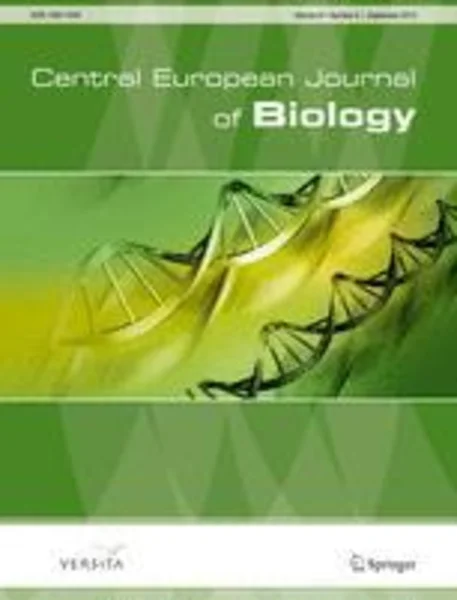-
led irradiance level affects growth and nutritional quality of brassica microgreens
جزئیات بیشتر مقاله- تاریخ ارائه: 1392/07/24
- تاریخ انتشار در تی پی بین: 1392/07/24
- تعداد بازدید: 839
- تعداد پرسش و پاسخ ها: 0
- شماره تماس دبیرخانه رویداد: -
this study examines the effect of irradiance level produced by solid-state light-emitting diodes (leds) on the growth, nutritional quality and antioxidant properties of brassicaceae family microgreens. kohlrabi (brassica oleracea var. gongylodes, ‘delicacy purple’) mustard (brassica juncea l., ‘red lion’), red pak choi (brassica rapa var. chinensis, ‘rubi f1’) and tatsoi (brassica rapa var. rosularis) were grown using peat substrate in controlled-environment chambers until harvest time (10 days, 21/17°c, 16 h). a system of five lighting modules with 455, 638, 665 and 731 nm leds at a total photosynthetic photon flux densities (ppfd) of 545, 440, 330, 220 and 110 µmol m−2s−1 respectively were used. insufficient levels of photosynthetically active photon flux (110 µmol m−2s−1) suppressed normal growth and diminished the nutritional value of the brassica microgreens studied. in general, the most suitable conditions for growth and nutritional quality of the microgreens was 330–440 µmol m−2 s−1 irradiation, which resulted in a larger leaf surface area, lower content of nitrates and higher total anthocyanins, total phenols and 2,2-diphenyl-1-picrylhydrazyl (dpph) free-radical scavenging capacity. high light levels (545 µmol m−2 s−1), which was expected to induce mild photostress, had no significant positive impact for most of investigated parameters.
مقالات جدیدترین رویدادها
-
استفاده از تحلیل اهمیت-عملکرد در ارائه الگوی مدیریت خلاقیت سازمانی و ارائه راهکار جهت بهبود
-
بررسی تاثیر ارزش وجوه نقد مازاد بر ساختار سرمایه شرکت های پذیرفته شده در بورس اوراق بهادار تهران
-
بررسی تأثیر سطح افشای ریسک بر قرارداد بدهی شرکت های پذیرفته شده در بورس اوراق بهادار تهران
-
بررسی تأثیر رتبه بندی اعتباری مبتنی بر مدل امتیاز بازار نوظهور بر نقد شوندگی سهام با تأکید بر خصوصی سازی شرکت ها
-
تأثیر آمیخته بازاریابی پوشاک ایرانی بر تصویر ذهنی مشتری پوشاک ایرانی (هاکوپیان)
-
بررسی کنوانسیون بیع بین المللی کالا از منظر مفهوم شناسی ریسک و غرر
-
حذف هتروزیگوسیتی ژن tco در خانواده های ایرانی مبتلا به سرطان تیروئید غیرمدولاری ارثی
-
an alternative approach to integrating plasticity relations
-
مدل سازی و شبیه سازی کاهش تخریب پیش رونده با استفاده از تقویت کننده هایی روی بال تیر ها
-
طراحی نظام حرکتی پیاده مدار بر مبنای روابط متقابل آن با دیگر عرصه های حیات
مقالات جدیدترین ژورنال ها
-
مدیریت و بررسی افسردگی دانش آموزان دختر مقطع متوسطه دوم در دروان کرونا در شهرستان دزفول
-
مدیریت و بررسی خرد سیاسی در اندیشه ی فردوسی در ادب ایران
-
واکاوی و مدیریت توصیفی قلمدان(جاکلیدی)ضریح در موزه آستان قدس رضوی
-
بررسی تاثیر خلاقیت، دانش و انگیزه کارکنان بر پیشنهادات نوآورانه کارکنان ( مورد مطالعه: هتل های 3 و 4 ستاره استان کرمان)
-
بررسی تاثیر کیفیت سیستم های اطلاعاتی بر تصمیم گیری موفق در شرکتهای تولیدی استان اصفهان (مورد مطالعه: مدیران شرکتهای تولیدی استان اصفهان)
-
بررسی تاثیر هویت سازمانی بر عملکرد سازمانی و مشتری مداری در صنعت بیمه (نمونه ی موردی: شرکت بیمه سامان)
-
تحلیل حقوقی انتقال عین مستأجر در قانون مدنی
-
بررسی اثربخشی توانمندسازی مدیران میانی از طریق آموزش های مدیریتی (مورد مطالعه: دانشگاه علوم پزشکی و خدمات بهداشتی درمانی شیراز)
-
تأثیر حاکمیت شرکتی، مدیریت سود و اندازه شرکت در پیش بینی سود با تأکید بر مازاد جریانات نقدی در شرکت های پذیرفته شده در بورس اوراق بهادار تهران
-
determination of heavy metal pollution products, vegetable gardens ardabil




سوال خود را در مورد این مقاله مطرح نمایید :